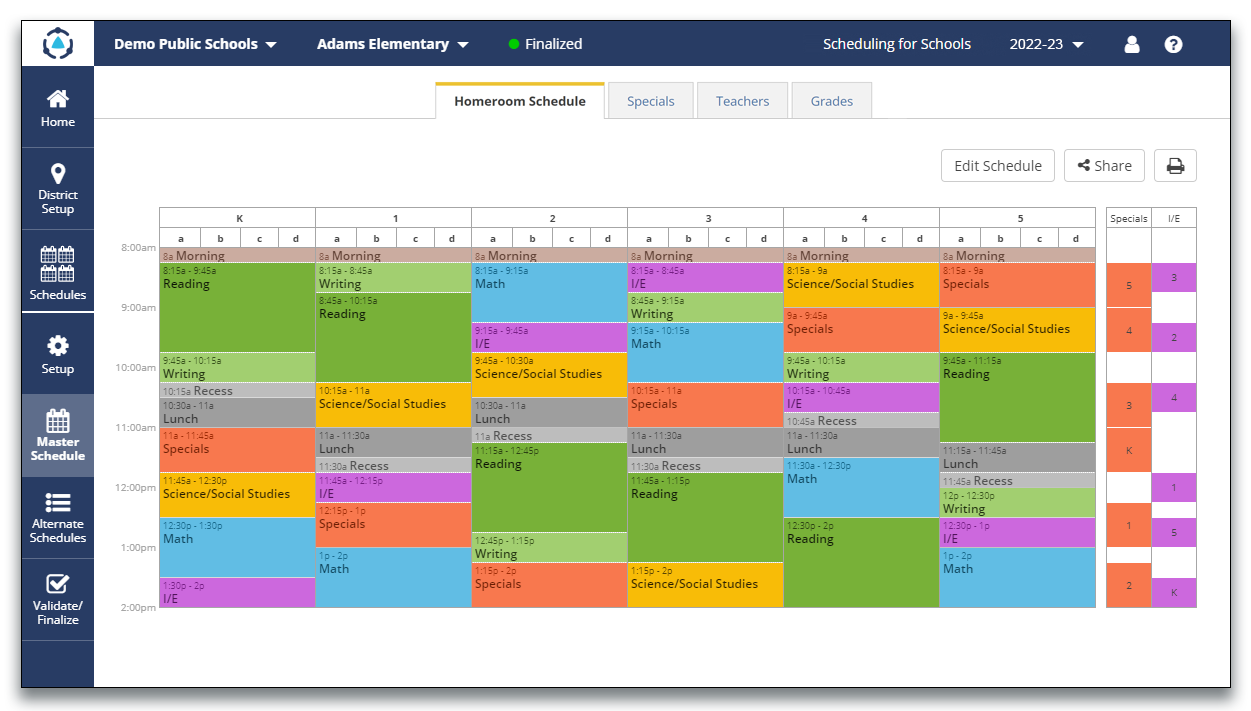
Building an Elementary Schedule - Part 7: Intervention and Enrichment Scheduling
This 12-part series on How to Build an Elementary School Schedule offers step-by-step guidance and proven scheduling strategies for creating a better elementary school schedule.
When students have a wide range of needs across the school and even within the same grades and classes, meeting every student's needs can be challenging. A dedicated intervention and enrichment (I/E) period can ensure each student receives the support they need, whether that is extra time in areas that need more help or enrichment opportunities.
This article explores the fundamental concepts behind a strong intervention/enrichment block.
Is it necessary to schedule an intervention and enrichment (I/E) period?
A grade-level intervention block allows students to receive extra support without being routinely pulled away from core instruction and missing valuable time with their teachers and peers. As an addition to core classroom instruction, a daily intervention block provides students who are having difficulty with reading, math, or other an opportunity to close the gap by receiving extra practice time, reinforcement, and re-teaching.
Daily enrichment occurs during the same period as daily intervention. Enrichment activities may include independent study, cross-curricular activities, and project-based learning.
How much time should be allocated to an I/E period?
We recommend at least 30 minutes daily for an intervention and enrichment period. Why? Research-based findings indicate 30 minutes of reading support each day is effective in helping most students close reading skill deficits and achieve grade-level expectations. This can serve as a good baseline when determining minutes for your I/E periods.
The I/E period(s) should align with your students' needs and be grounded in assessment and testing data. You may determine that different needs are present at different grades and therefore design your I/E periods differently by grade. If you are introducing an I/E period for the first time, potentially as an accelerated learning strategy, you may want to start with 30 minutes daily to ensure you can leverage this time effectively and staff appropriately.
Some schools may have separate reading and math I/E blocks. Others may vary the time for ELA vs. Math I/E. Regardless, I/E time must come from somewhere, so it is important to balance it with your curriculum needs and incorporate I/E periods when designing your instructional minute guidelines.
Who provides instruction during I/E periods?
All content-strong classroom and intervention teachers should teach during the I/E period (e.g. Homeroom, Interventionists, and Special Education Teachers) whenever possible. If a student does not require core ELA or Math support during I/E periods, this time can also be used for other interventions and related services.
When it comes to I/E periods, how should students be grouped?
Grade-level intervention blocks allow classroom groupings to be flexible, time-bound, and targeted based on common assessment data that provides insight into individual student needs.
Teachers at the grade level, interventionists, and special education teachers need to collaborate and review data regularly to form and review intervention groups and monitor student progress effectively.
It is also important to aim to group students by their specific needs (e.g. “phonics” vs. simply “Reading”) and align their supports with a teacher that is content strong in those specific needs. In short, you are attempting to create an I/E opportunity that is a…
WIN (what I need)
WIN (when I need it)
WIN (with whom I need it).
The implementation of a daily intervention and enrichment period can help your school better meet the needs of students with a wide range of needs. Consider your student needs and add an I/E block to enhance your elementary school schedule.
Need Support with Scheduling?
DMSchedules Can Help.
The key to scheduling success is preparation and planning. Start taking action now so that you and your scheduling team are well-positioned for success this scheduling season. If you need help building your elementary school schedule, reach out to us. We can take scheduling off your plate, and create your school schedule aligned with your learning goals.

